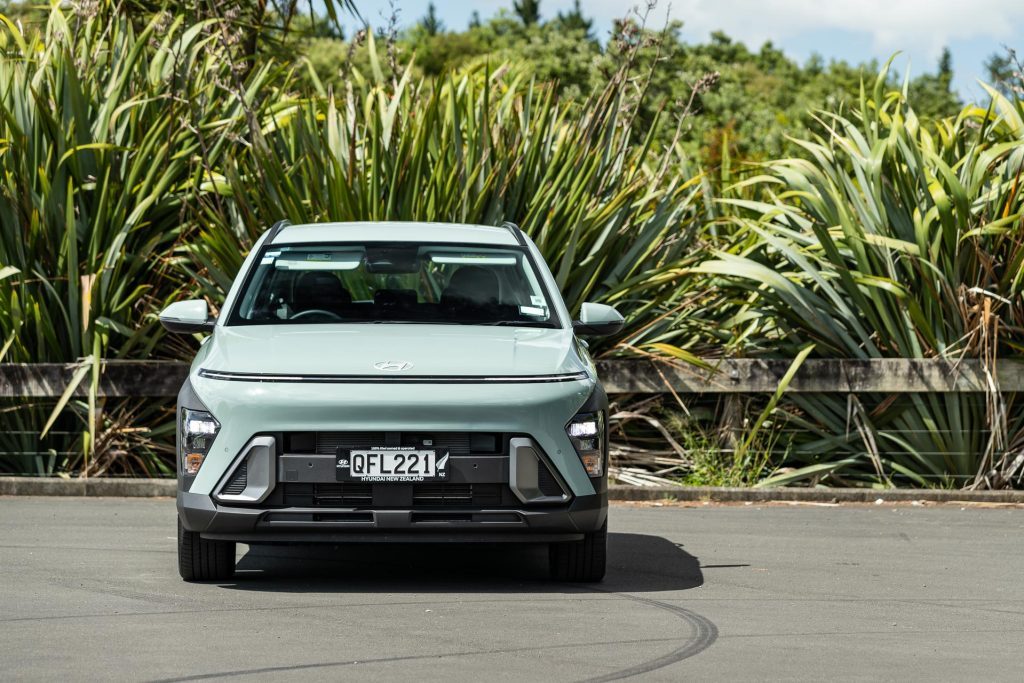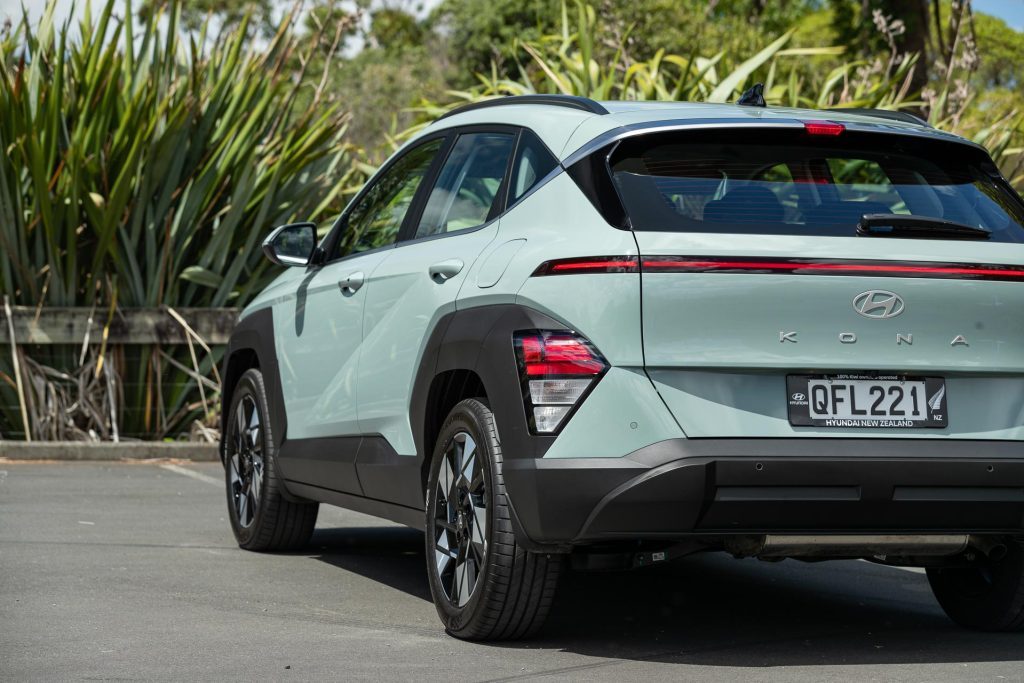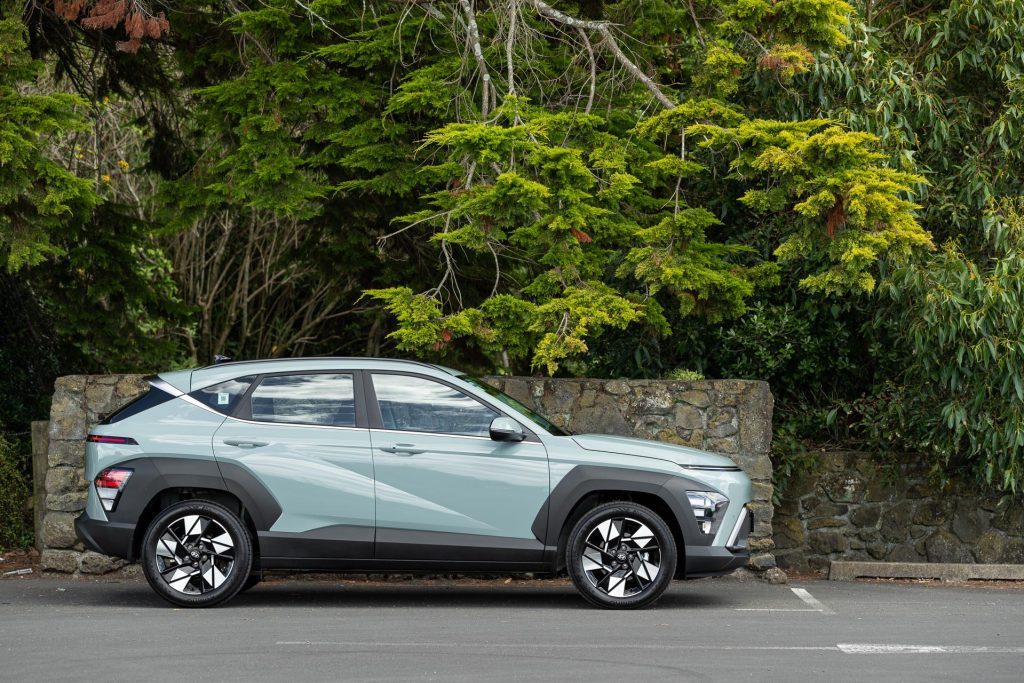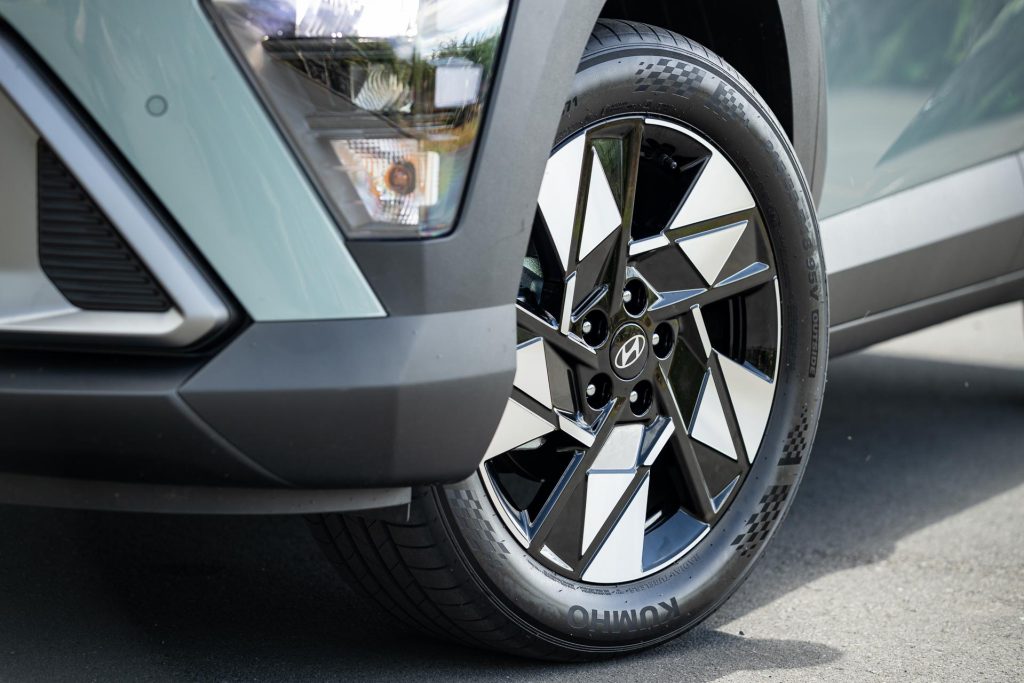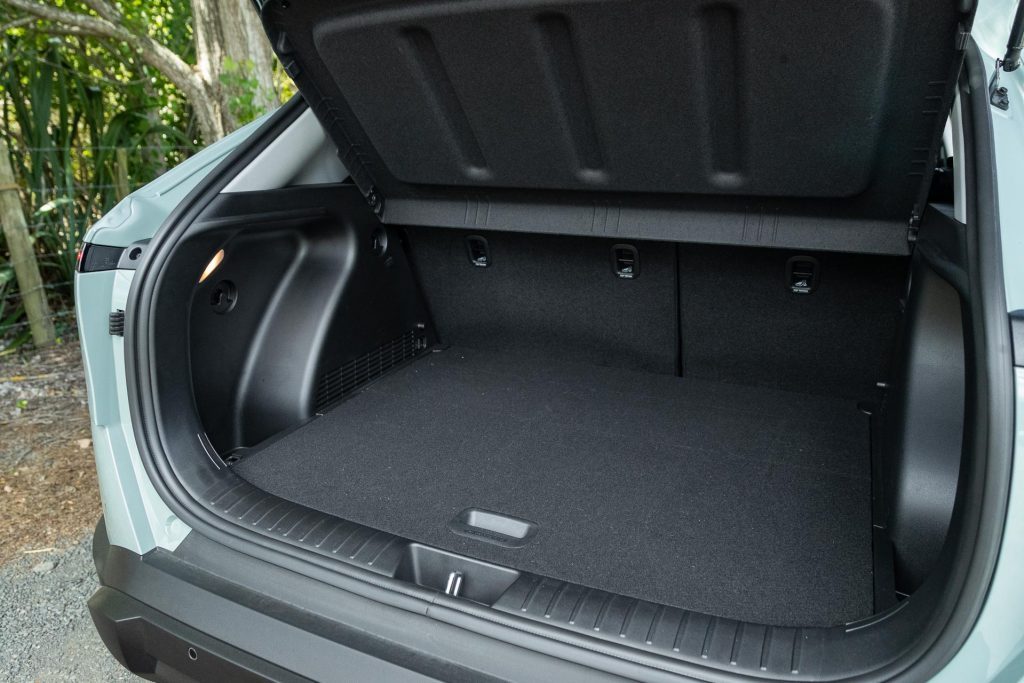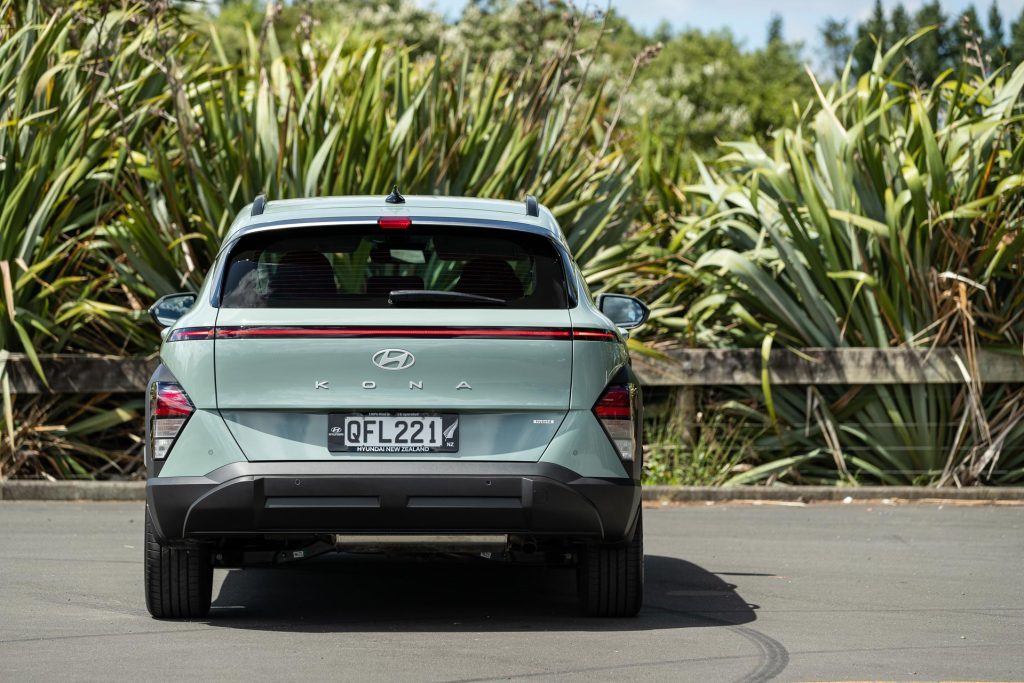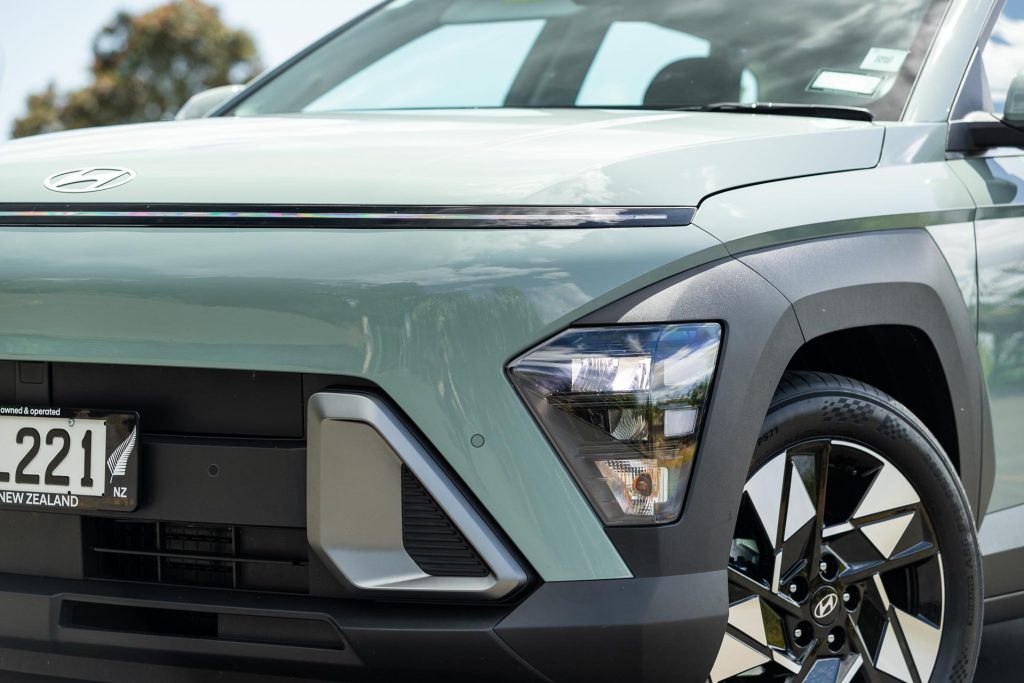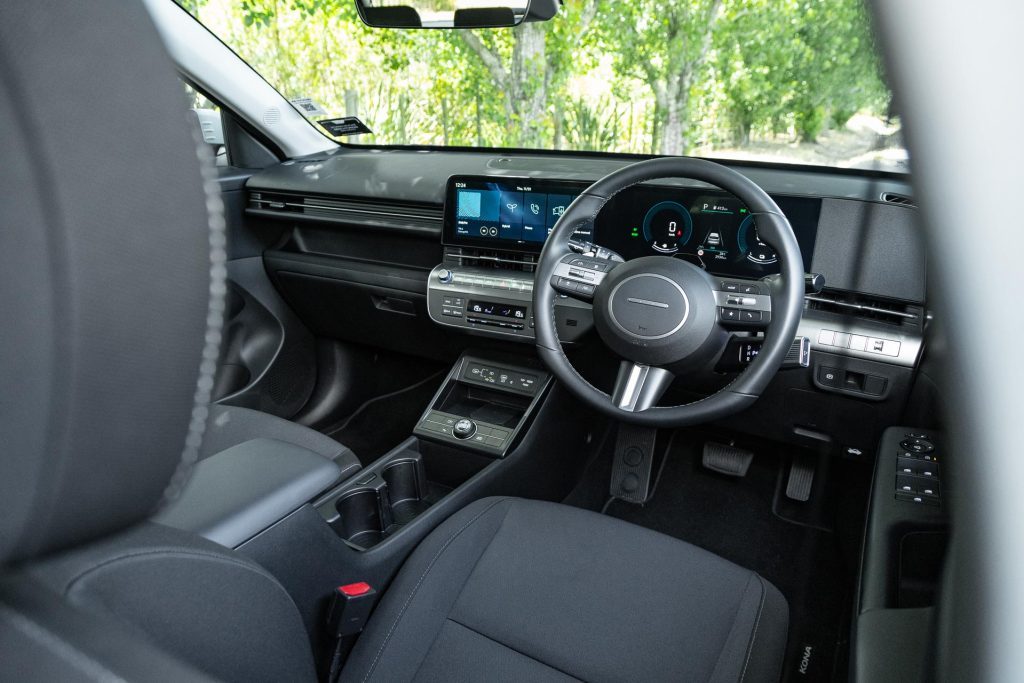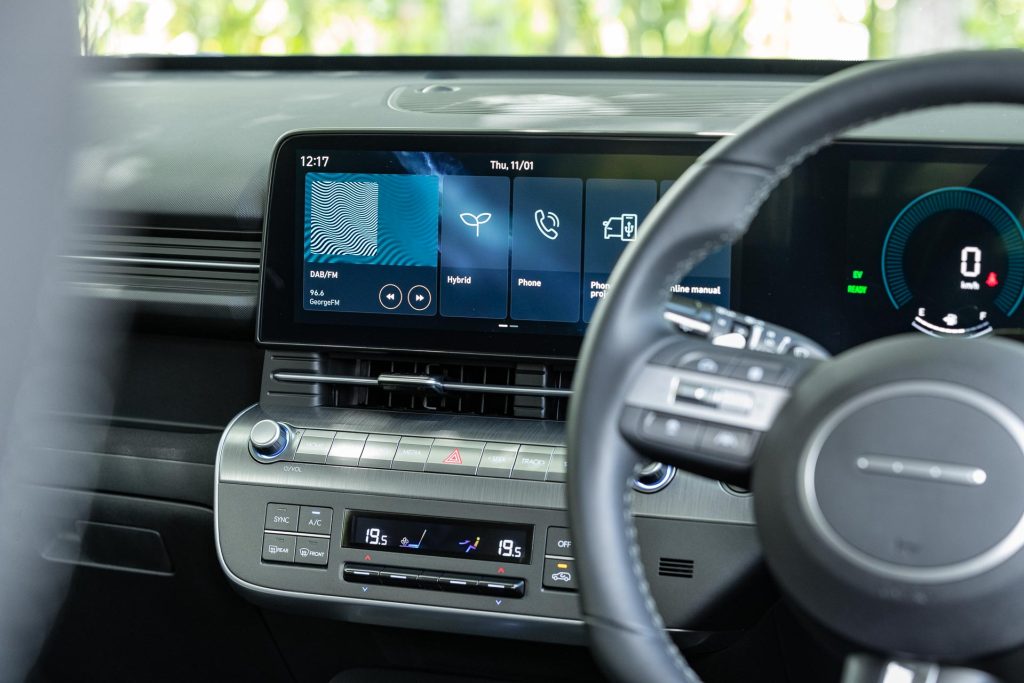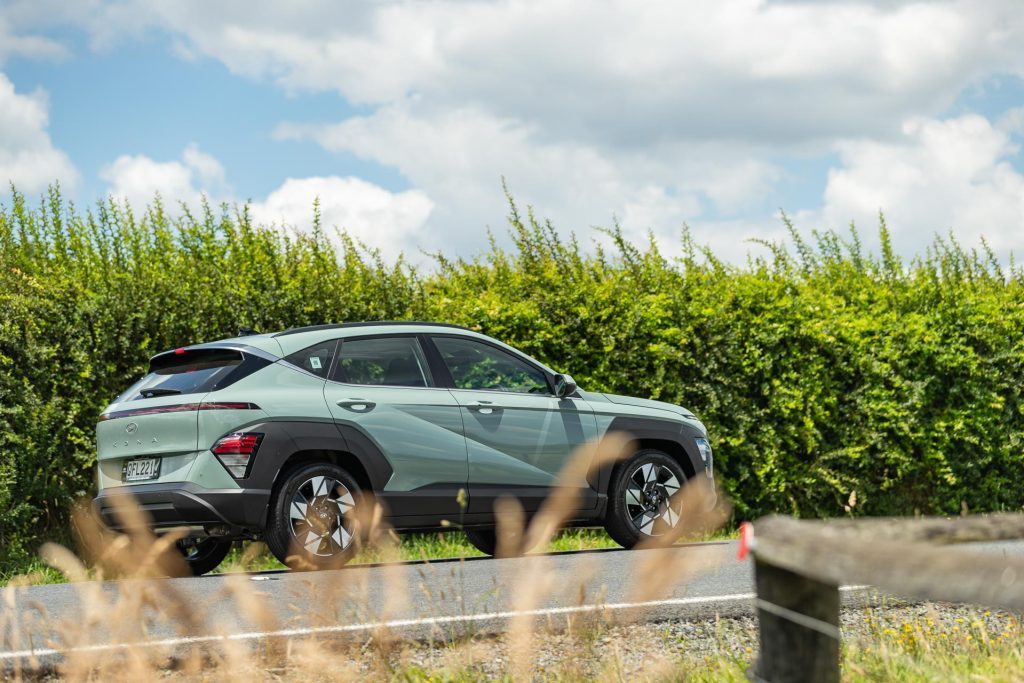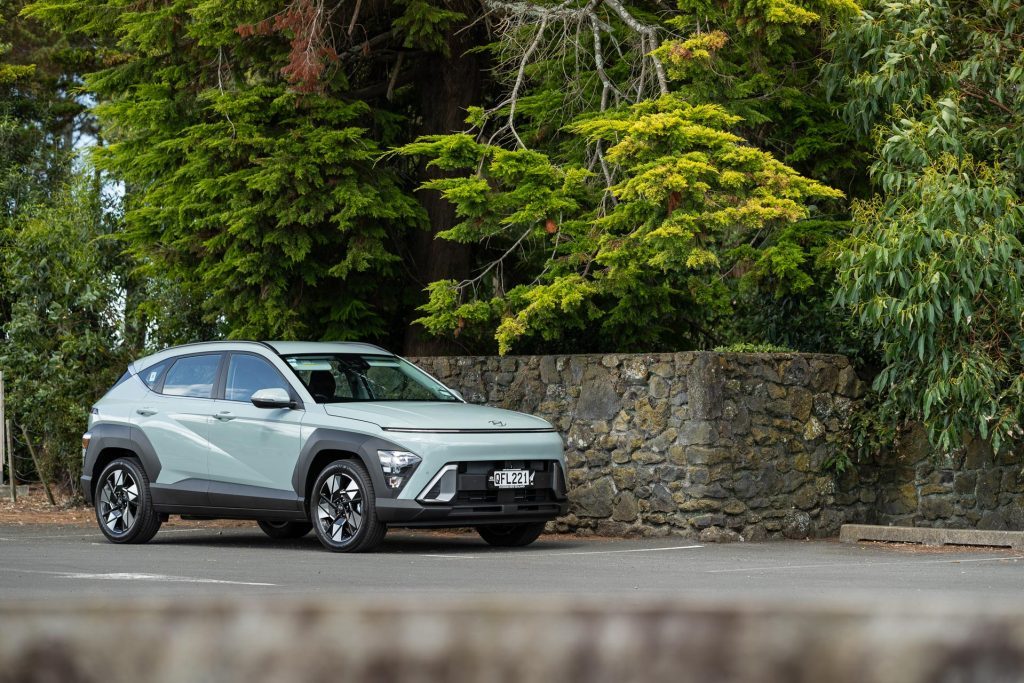2023 Hyundai Kona 1.6 Hybrid Active review
The original Kona became Hyundai’s best seller locally. Will the new one be as popular? Check out the Hybrid Active.

The original Kona became Hyundai’s best seller locally. There’s a new one on the block but will it continue to be as popular in its new guise? Here we check out the Hybrid Active.
Hyundai’s Kona is now in its second generation, and forming part of the local line-up is a hybrid option.
A petrol electric version of the Hyundai Kona was introduced late in the life of the previous generation, but now there are now four hybrids to choose from (with eight Kona variants all told), and it would be our pick of the powertrains.
It carries the usual electrified premium however. The entry-level Kona 2.0 Active is $42,990, while this hybrid Active is $52,990. And the Hyundai Kona 1.6T N Line Limited sits at $64,990.
However, it’s not quite an apples-for-apples comparison; the 2.0 comes with a torsion beam rear end, the hybrid with a multilink, for instance, while there are a few other spec anomalies between them.
If you can wear the premium, this hybrid works well both in and out of the urban environment, helping lower your emissions profile.
The fuel use figure is listed as 4.3L/100km versus 7.3L/100km for the 2.0. The long-term figure for this tester was reading 5.1L/100km whereas we managed 4.7L/100km during our stint.
And, interestingly, that figure was the same for 250km worth of urban driving (in the hot traffic, air con on full blast) as it was for 250km of extra-urban travel (Auckland to Raglan and back).
This helps highlight the evolution of hybrid tech; it used to be good only for city running but now these work just as well out of town as they do in the city.
What kind of hybrid is it?
To be clear, this is a ‘self-charging’ hybrid, no need to plug this in, which does appeal to people apparently.
The small lithium-ion battery (1.3kWh) is charged by both the motor regeneration under braking and by the petrol engine (via a generator).
It all runs via a six-speed dual-clutch transmission, so there is some shift shock as it goes through the lower cogs but it does decent mileage on the electric motor alone.
This electrified Kona will maintain your speed on an easy cruise at 50km/h plus with the engine off (we’re talking on a flat bit of road) and briefly on the motorway too. That helps lower the overall fuel use.
There are paddles present behind the wheel, and we wondered why the transmission refused to change gears when flapping them. But these are of course to cycle through the various modes of energy regeneration.
You can have it all off (coasts along freely on a dead throttle) and then flap the paddle to introduce three levels of regen. There’s an Auto mode too, the on-board sensors working out what to do.
And you can pull and hold the left paddle and it’ll initiate max regen, right down to a smooth halt. This has the best regen of any hybrid we have driven.
You can also completely disregard the paddles and just brake normally, the pedal blending the regen and friction stoppers competently.
This is a hybrid not a sprinter – the 0-100km/h dash takes a casual 10sec – as the 1.6 atmo engine and 32kW motor combine to make an adequate 104kW.
But with 265Nm available, there’s good urge off the mark and plenty for commuting purposes.
Bigger and better?
That most new models are bigger than those they replace isn’t the best trend, but it actually works in the Kona’s favour here.
It’s still compact enough but now it’s more of a viable option for a family, rather than just empty nesters with the occasional need to ferry passengers.
It has more space in the rear, not overly generous for adults mind you but there’s better room for kids. And the boot too has gone from being rather pathetic to useful.
The rear seat split folds easily to form a flat load area, and there’s a space saver spare under the floor. It can even tow up to 1300kg, so it’s certainly more practical.
The safety minders take their job seriously. There is a speed alert that keeps at you (it’s particularly intolerant, dinging as soon as you are two or three kays over the limit), and the driver monitor is on your case consistently too.
These are not easy to switch off, and so you tend to just ignore them. And so when something does require your attention, you have mentally blocked it out.
And on top of this, Kona received a four-star crash rating from ANCAP due to it not gaining enough marks in the areas of Vulnerable Road User Protection and Safety Assist technology.
Flash inside and out
The look is kind of interesting, though not universally admired for sure. Sci-fi fans will like the futuristic front end, while the creased panels and plastic cladding give the flanks character.
The interior is laid out thoughtfully with proper controls for the ventilation, leaving the infotainment system to run the media and phone interface.
This $53k vehicle doesn’t come with sat nav, so you’ll be needing your smartphone for that and both CarPlay and Android Auto are supported, while there is a charge pad and a couple of USB C plugs.
The gear lever has been repositioned, now slung off the column and is easy enough to use, though we wish that the start button, gear selector and park brake switch were clumped together.
Here, they are all over the place, the park brake hard to get at down by your right knee.
But otherwise, the general layout is sound, and there’s plentiful storage in the centre console thanks to that column shifter, including decent cup holders.
It’s a pity that none of the spots is lined, and so things rattle around on the hard plastic surfaces. There is an abundance of these with no soft bits on the door or handle, the dash hard too.
Though it doesn’t look cheap, it’d be nice to have a few soft points about the cabin.
The seats are trimmed in hard-wearing black fabric with manual operation but you can get over that as they are comfortable items.
The cabin quality feels robust, it’s spacious and has a good driving position and clear outward vision. This gets the essentials right then.
That includes a reasonable turning circle, good steering (easy going and consistently weighted) and an acceptable ride quality over all surfaces.
The Active only has a regular old reversing camera but the view is clear and wide.
How does it go?
The drive mode button seems overly big considering it has but three modes, two of which you’ll seldom use. Eco is the default, Sport revs things up and there’s a Snow mode to help this front driver in slippery conditions.
In Sport mode, the trans and engine are more lively, for improved response and when it’s let loose, Kona turns quickly and confidently while the ride remains civil at speed and over the bumps.
It rounds up bends in a smooth fashion so you can keep things calm for those on board. And on highway roads, you can set the regen to Level 3 and it will slow you smoothly for most bends.
It’s reasonably quiet this hybrid too.
Worth upgrading?
While the price has risen some ($42k-$65k), so has the ask of most of the recently arrived competitors.
This hybrid performs well (when economy is taken into account), there are more safety features (for better or worse is up for debate) and there is more of it, which we like the most.
The styling is interesting and there’s a solid warranty.
Model
Hyundai Kona 1.6 Hybrid Active
Price
$52,990
Engine
1580cc, IL4, DI
Power
77kW @ 5700rpm
Torque
147Nm @ 4000rpm
Motor Output
32kW / 170Nm
Drivetrain
6-speed twin-clutch / FWD
Turning circle
10.6m (2.5 turns)
Fuel Use
4.3L/100km
C02 Output
98g/km
0-100km/h
10.04 sec
Tyre Size
f/r-215/55/R18
Fuel Capacity
38L
Stability systems
ABS, ESP, TV
Safety
AEB, ACC, BSM, LDW, RCTA, ALK, AHB
Luggage Capacity
407-1241L
Tow rating
600kg (1300kg braked)
Service intervals
12 months/15,000km
Warranty
5 years/150,000km
ANCAP rating
4 Stars (2023)
Weight
1410kg (claimed)
This article first appeared in the March 2024 issue of NZ Autocar magazine.
View listings on Trade Me Motors: Hyundai Kona
This article was originally published on autocar.co.nzAlso consider
